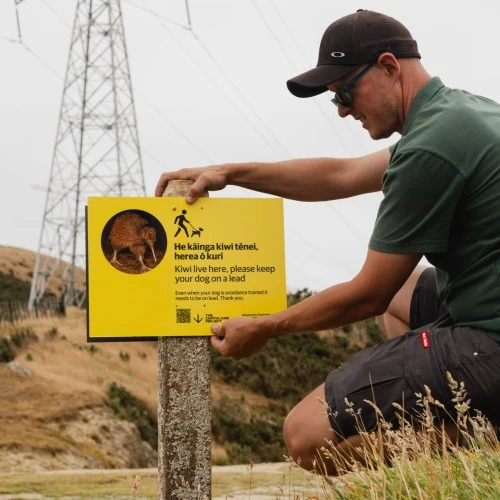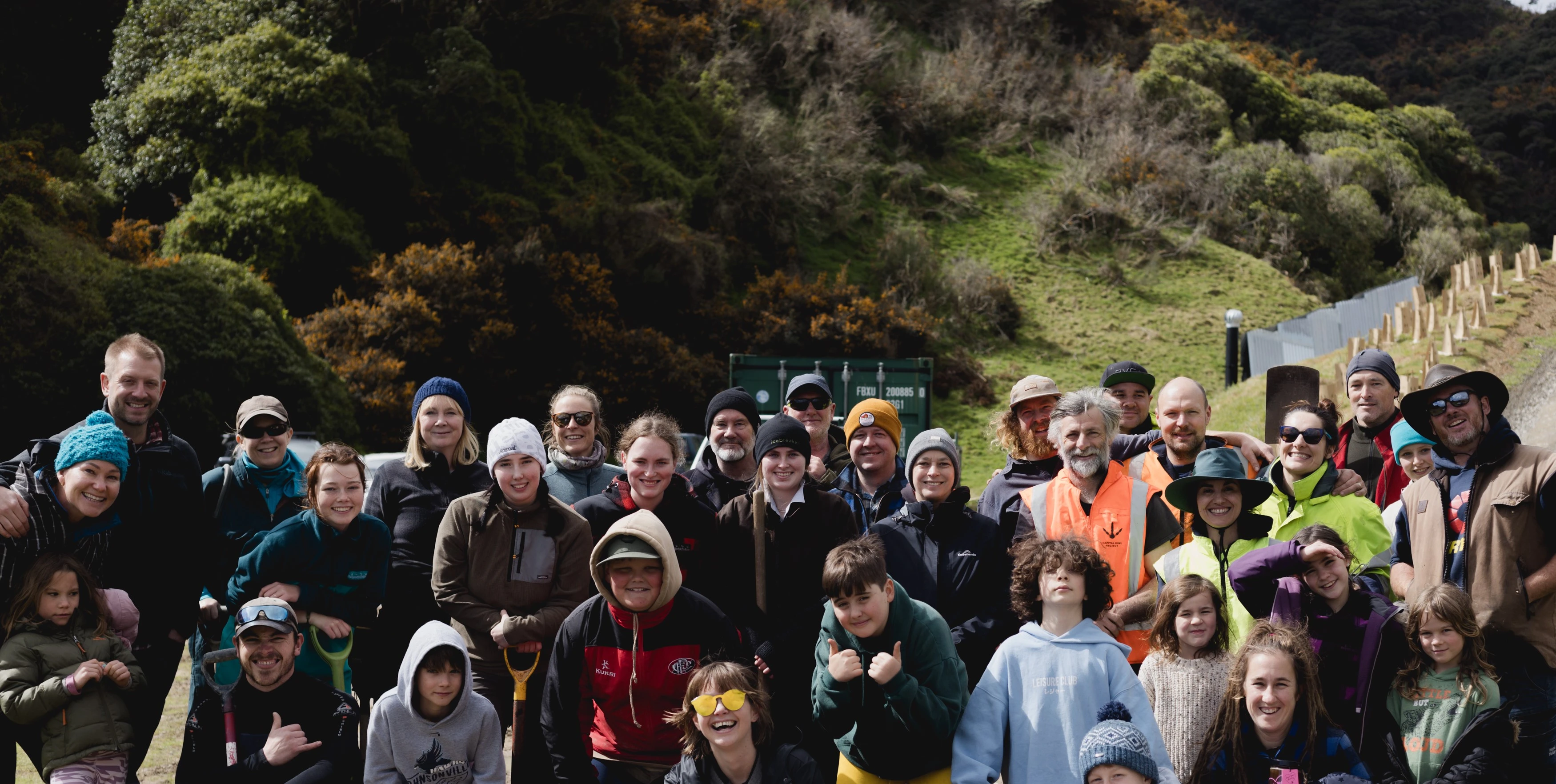Funding generated by Meridian Energy’s West Wind and Mill Creek wind farms is backing local efforts to restore and improve the biodiversity of the Mākara and Ōhāriu valleys.
With a catchment that includes the rugged Wellington coastal communities of Ōhāriu and Mākara, the Mākara Stream meanders through 8,000 hectares of rural land before flowing out through the Mākara Estuary to the ocean.
It may not be beautiful in a classical ‘tourist brochure’ kind of way, but the jagged terrain - shaped by the predominant nor-westerlies that punch in from the Tasman Sea - has a unique, undeniable charm.
For those of a more intrepid nature, Mākara is a launching point for some incredible kaimoana harvesting, with the rocky outcrops and crevices supporting an abundance of sealife.
Back on land, however, there is work to do restoring the catchment’s streams and wetlands. The estuary is choked with sediment, and the stream routinely tests positive for high levels of E. coli.
It’s an issue the locals, who make up the hundreds of small holdings and handful of large farms in Mākara and Ōhāriu, are determined to better understand and rectify.
“The local community has been steadily restoring streams, wetlands and patches of native bush on their properties over the past few years,” says Louise Askin, a local resident and member of the environmentally-focused Mākaracarpas community group.
“We aim to restore them so they become really good filters of sediment and nutrients.”
While the Mākaracarpas host annual planting days that double as fun community gatherings, “it’s as much about getting the plants in the ground as the mulled wine and the barbeque afterwards.” The group’s work primarily focuses on supporting the efforts of locals who are intent on making a positive impact themselves.
“It’s not like we are an environmental group trying to force people to do the right thing,” says Louise. “It is more supporting the great work that they are already doing, providing resources and sharing information."

